Plans to Build Super-Easy DIY Planter Boxes
Build a Simple Planter
With the arrival of Spring, for most of us, comes a ton of yard work. I will be the first to admit that my yard is a mess and I definitely have my work cut out for me! I’d really like to focus on my flower bed and garden, so these DIY planter boxes will certainly come in handy! The plans call for treated lumber (which can be painted once it dries) and the boxes can also be constructed out of cedar or pallet boards but keep in mind, narrow boards will have to be pieces to create the sides and ends!

Materials:
- 1-1/4″ weather resistant pocket hole screws (<– affiliate link!)
- 1/4″ galvanized wire mesh (also known as “hardware cloth”), optional
- Weed barrier cloth, optional
- Wood glue rated for exterior use
- Decorative wood carving, optional
- Sandpaper (100, 150, 220 grits)
- Finishing supplies (primer & paint, or stain, sealer)
Lumber:
- 1 – pressure treated 2×2 at 8′
- Half sheet of pressure treated 3/4″ plywood
Cut List:
- 4 – 2×2 at 21″ – Legs
- 2 – 3/4″ plywood at 16-13/16″ x 18-3/4″ – Ends
- 2 – 3/4″ plywood at 17″ x 18-3/4″ – Sides
- 1 – 3/4″ plywood at 13-11/16″ x 17″ – Bottom, optional
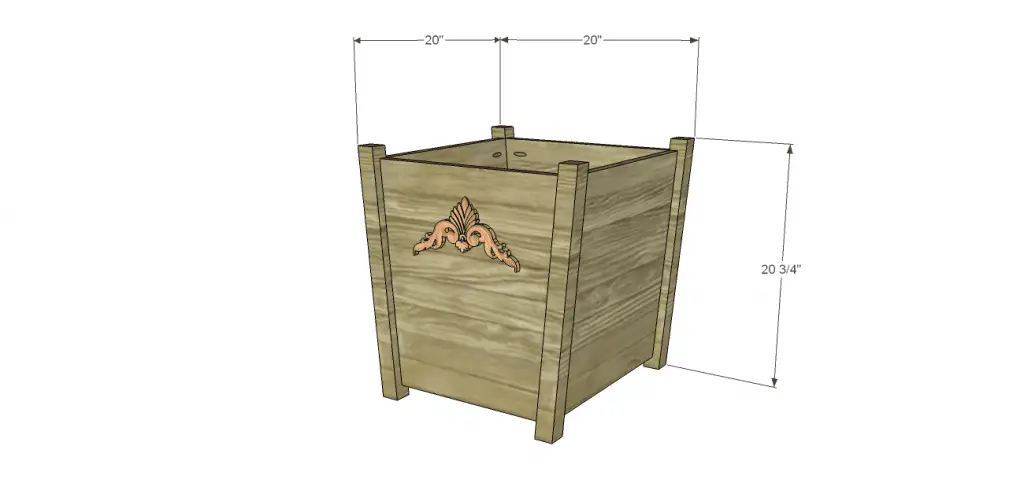
Click on the drawings for a larger view!
Step One
Cut the pieces for the legs. Cut a 5° degree angle in each end.
Cut the pieces for the ends. Cut the pieces as a square first, then draw the angles and cut them with a jigsaw or on the table saw. Set the pocket hole jig for 3/4″ material and drill pocket holes in each of these ends. Secure the end panels to the legs using glue and 1-1/4″ pocket hole screws. The back face of the panels will be flush with the inside face of the legs.

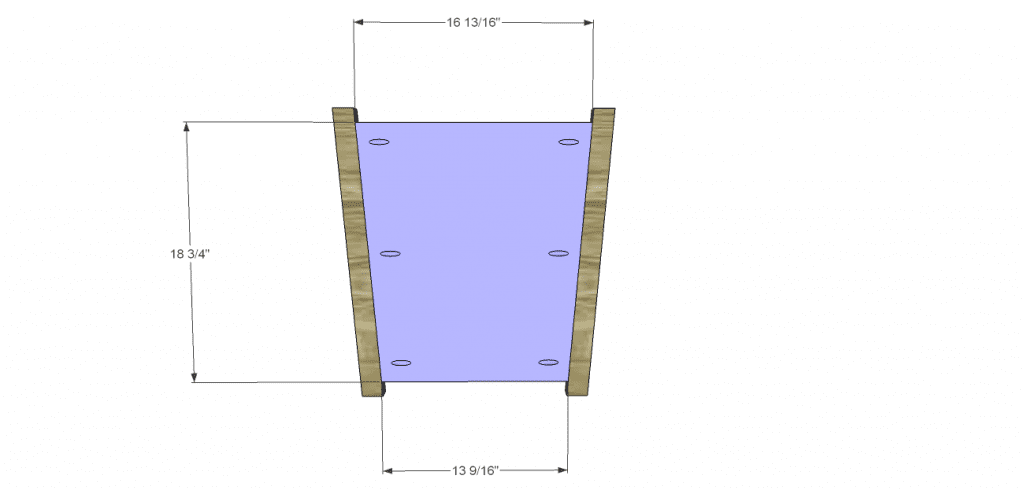
Step Two
Cut the pieces for the sides. Cut a 5° bevel in the top and bottom edges so that the pieces follow the line of the legs. Drill pocket holes in each longer edge. Secure to the legs using glue and 1-1/4″ pocket hole screws. The back face of the panels will be flush with the inside face of the legs.
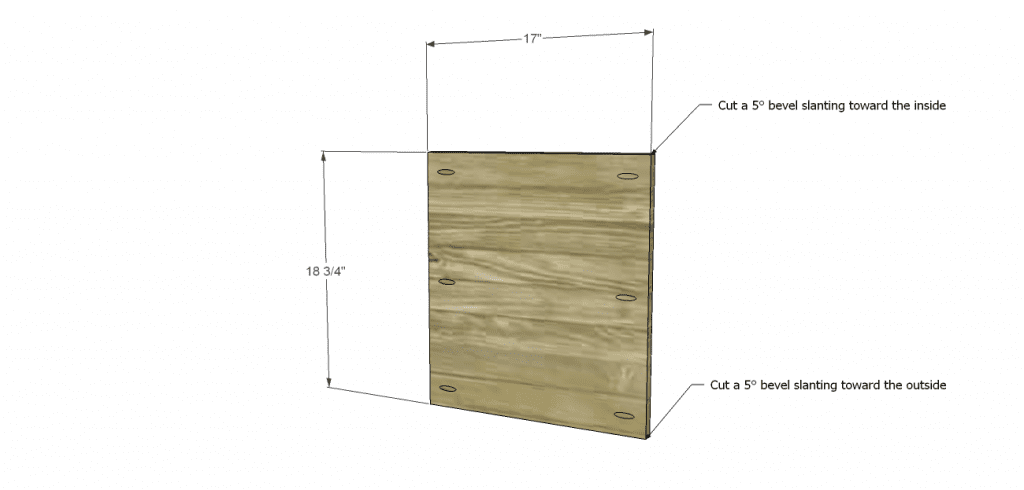

Step Three
Cut the piece for the bottom. Cut a 5° bevel in each of the longer edges. The bevels will face each other so the piece will fit snugly in the planter. Secure the bottom using glue and 1-1/4″ brad nails. Use a 1/2″ paddle bit or holesaw to drill holes in the bottom for drainage.
As an alternative, the bottom piece can be omitted and 1/4″ wire mesh can be stapled in the opening instead. cut the piece of mesh at least 2″ wider and longer than the bottom opening. Fold 1″ on each side, then staple the mesh to the inside of the planter. Line the planter with the weed barrier cloth to prevent the soil from falling through.
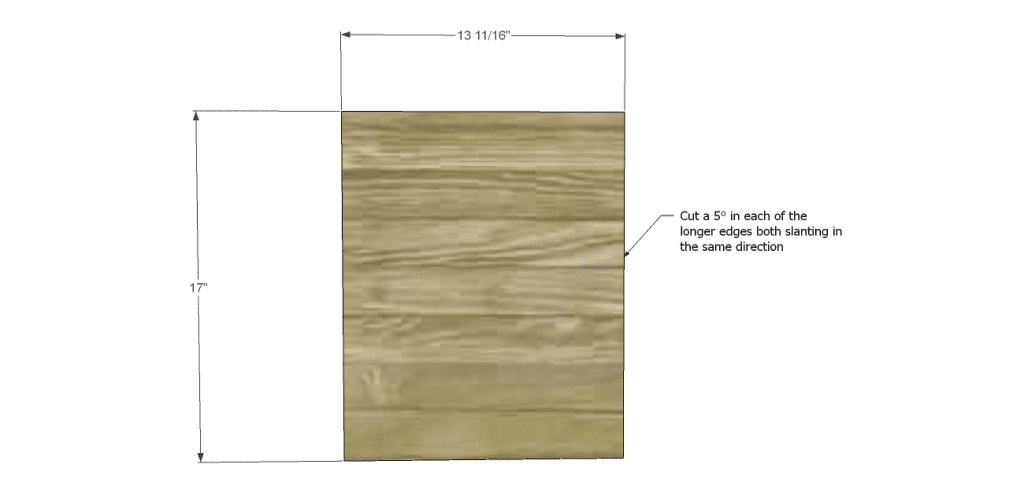
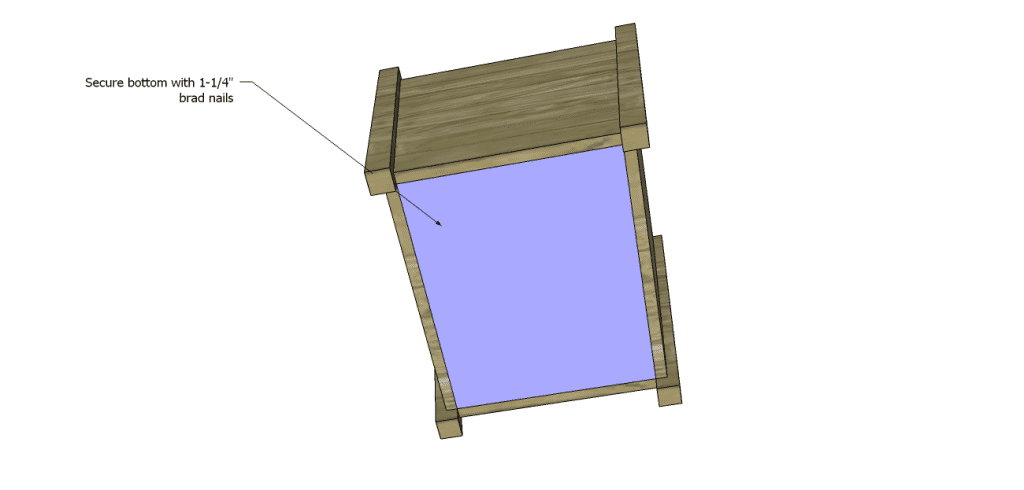 Let the treated lumber dry (usually a month or two), then paint as desired. The decorative carving can be added using glue – it will need to be coated with spar varnish prior to attaching to the planter.
Let the treated lumber dry (usually a month or two), then paint as desired. The decorative carving can be added using glue – it will need to be coated with spar varnish prior to attaching to the planter.
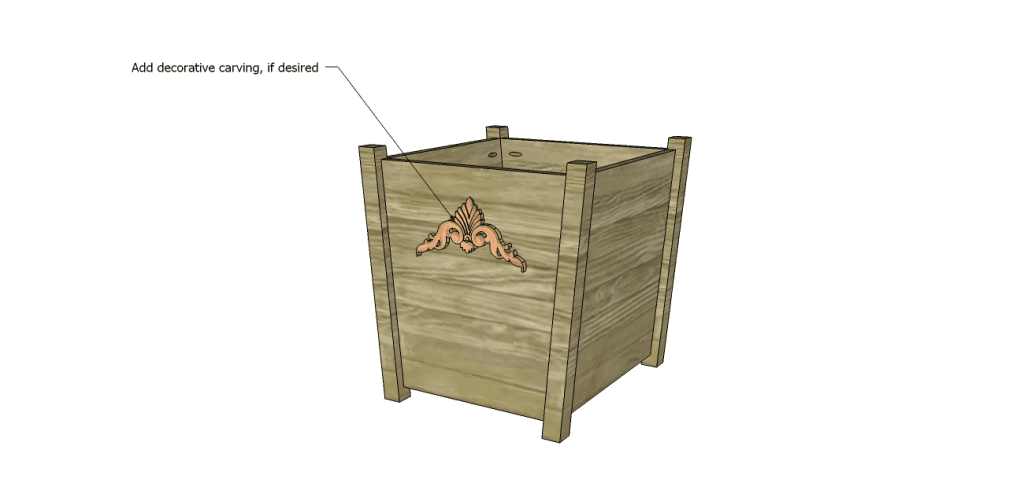
Several of these DIY planter boxes can be whipped out in a weekend! I plan on building quite a few and using them for tomatoes – I love tomatoes! Any questions? Let me know at cher {at} designsbystudioc {dot} com!
Originally posted 2014-03-21 08:00:14.
